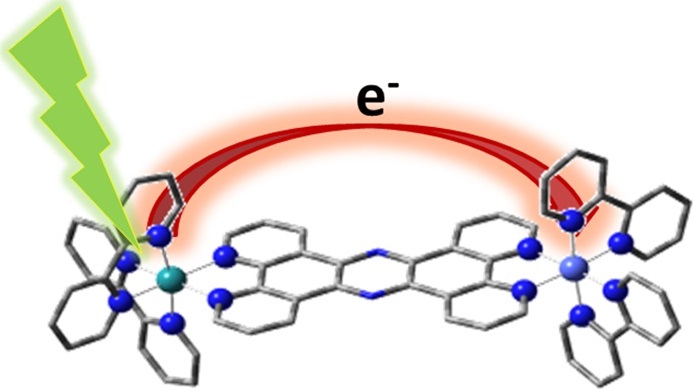04 Mar 15
by Anne Hansen
Using sophisticated laser and X-ray equipment, DTU researchers are the first to successfully track an electron’s ultra-fast path through a light absorbing molecule. This exciting achievement brings us one step closer to exploiting the sun’s energy.
In collaboration with researchers from Japan, Sweden, Germany, Hungary, and the USA, researchers from DTU Physics and DTU Chemical Engineering are the first to succeed in tracking the path of an electron all the way through a molecule—from the moment the electron was activated by sunlight until its final resting point on the part of the molecule that can use the electron to drive a chemical reaction, e.g. to split water.
Huge potential for controlling electron movement
The new findings, which have just been published in Nature Communications, provide another piece of the giant puzzle of understanding natural photosynthesis, i.e. how plants absorb and store solar energy in chemical bonds. A deeper understanding of the process paves the way to imitate the process by means of artificial photosynthesis, enabling us to use solar energy to make more eco-friendly fuels, for example.
“Photocatalytic systems offer huge potential. If we can learn to control electron transfer in light absorbent molecules, we have the potential to exploit the activated electrons’ surplus energy to produce fuels or electricity without major heat loss. This is why an insight into electron movement through molecules is so important,” says Professor Martin Meedom Nielsen from DTU Physics, who headed the study.
Electron movement many times faster than the speed of sound
Light-activated electron transfer between the atoms in a molecule is one of the most important events in biological molecules. However, it is also an event that takes place on such an ultra-fast time scale—the speed of electrons has to be measured in femtoseconds, i.e. 10-15 s— that it takes highly specialized, sophisticated equipment to capture the electron’s jump.
Using a so-called free-electron laser (SACLA in Osaka in Japan) which generates pulses of duration less than 100 femtoseconds together with sophisticated X-ray equipment, the researchers have successfully tracked the electron’s path through a bi-metallic ruthenium-cobalt molecule. It transpired that the electron moved from the light absorbent ruthenium centre via a bridge in the molecule to the catalytically active cobalt-centre and that it took the electron less than 500 femtoseconds to cross the bridge between the two metal centres in the molecule. This means that the electron moved at almost ten times the speed of sound.
Until now, it was naturally assumed that the electron began its journey in the light absorbent centre and ended up in the catalytically active area of the molecule. But this is the first time that scientists have succeeded in following such a complex and fast reaction and have been able to distinguish all the reaction stages.
“I think it’s one of the most interesting studies we have conducted. It shows that you can take the step from simple model systems where you simply follow the movement in a small area of the molecule to studying systems that are close to having ’practical applications’. Our system contains all the links in the chain—from the area of the molecule which absorbs light, forms a free electron that is then sent to another area in the molecule, which in similar systems can use the electron to produce a catalytic reaction,” says Martin Meedom, speaking from the free-electron laser LCLS in Stanford, USA, where he is currently in the process of conducting new experiments.















